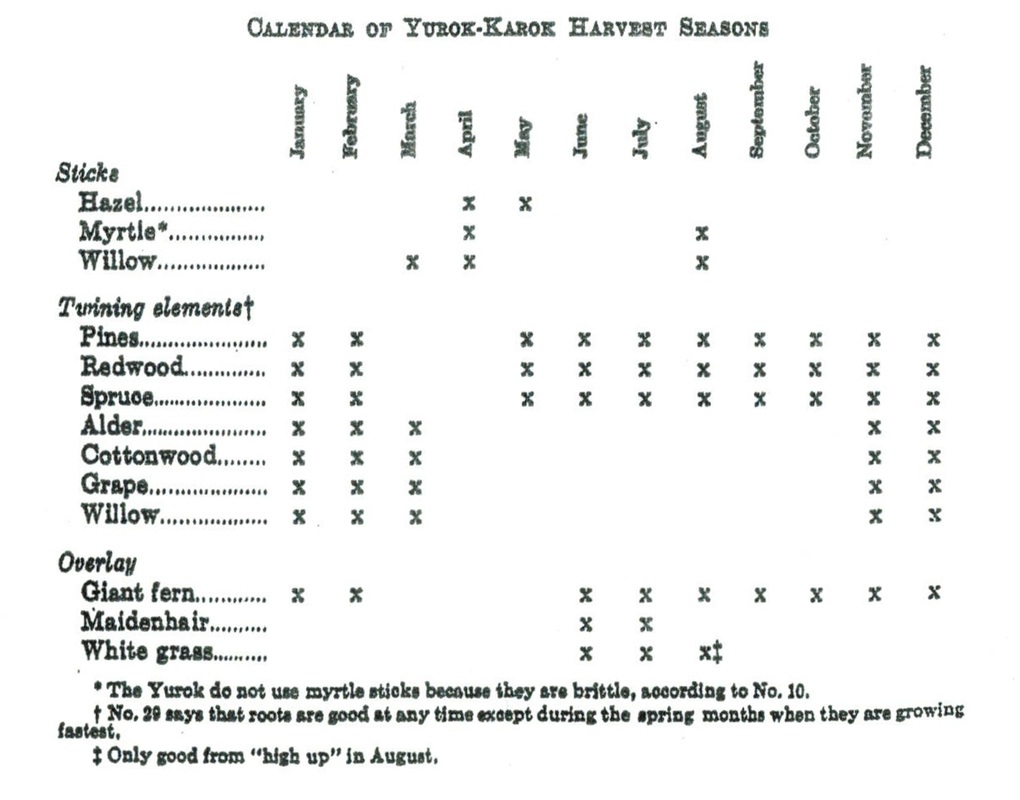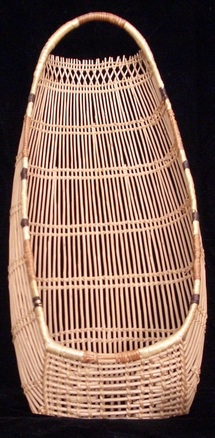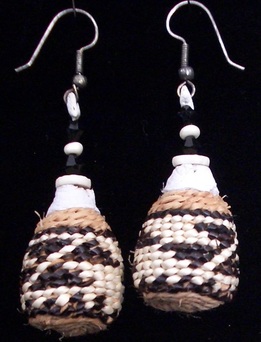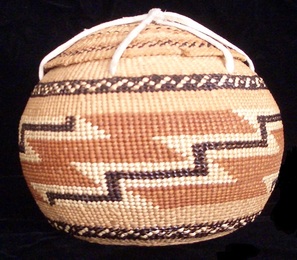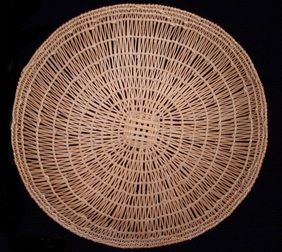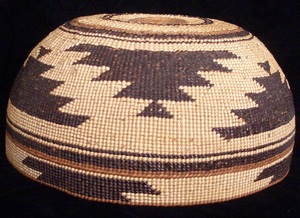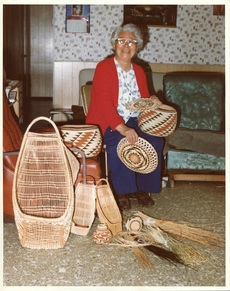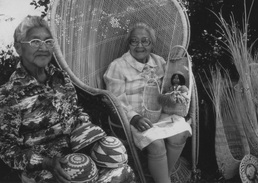Basketmaking Materials and Processes
|
The Clarke Historical Museum is well known for its extensive collection of Native American baskets. The collection includes thousands of baskets, mostly from four local tribes: Yurok, Karuk, Hupa, and Wiyot. These baskets, made in the twining tradition, consist of three distinct parts: warp, weft, and overlay.
The upright weave, or warp, consists mostly of hazel sticks and willow sticks. Hazel and willow shoots are collected up in the mountains early in spring. The horizontal weave, or weft, usually includes roots from conifers, such as Sitka spruce or sugar pine, along with willow roots. These roots are collected from the sides of the riverbanks in winter, just after the high waters recede. The overlay, or design, is comprised of several different materials depending on the desired design of the finished product. Overlay materials include bear grass, alder-dyed Woodwardia fern, five-fingered fern, and wolf moss-dyed porcupine quills. It usually takes a year of gathering and processing materials before basket production can begin. If you are interested in learning more about Native American baskets, the Clarke Gift Shop has several books available on the topic: The Hover Collection of Native American Baskets, Baskets & Weavers, Essential Art: Native Basketry from the California Indian Heritage Center, the Nettie Ruben catalog, and Made for the Trade. DVD copies of Weaving Through Time and Vivien Hailstone: Through the Eyes of a Basketweaver are also available. |

